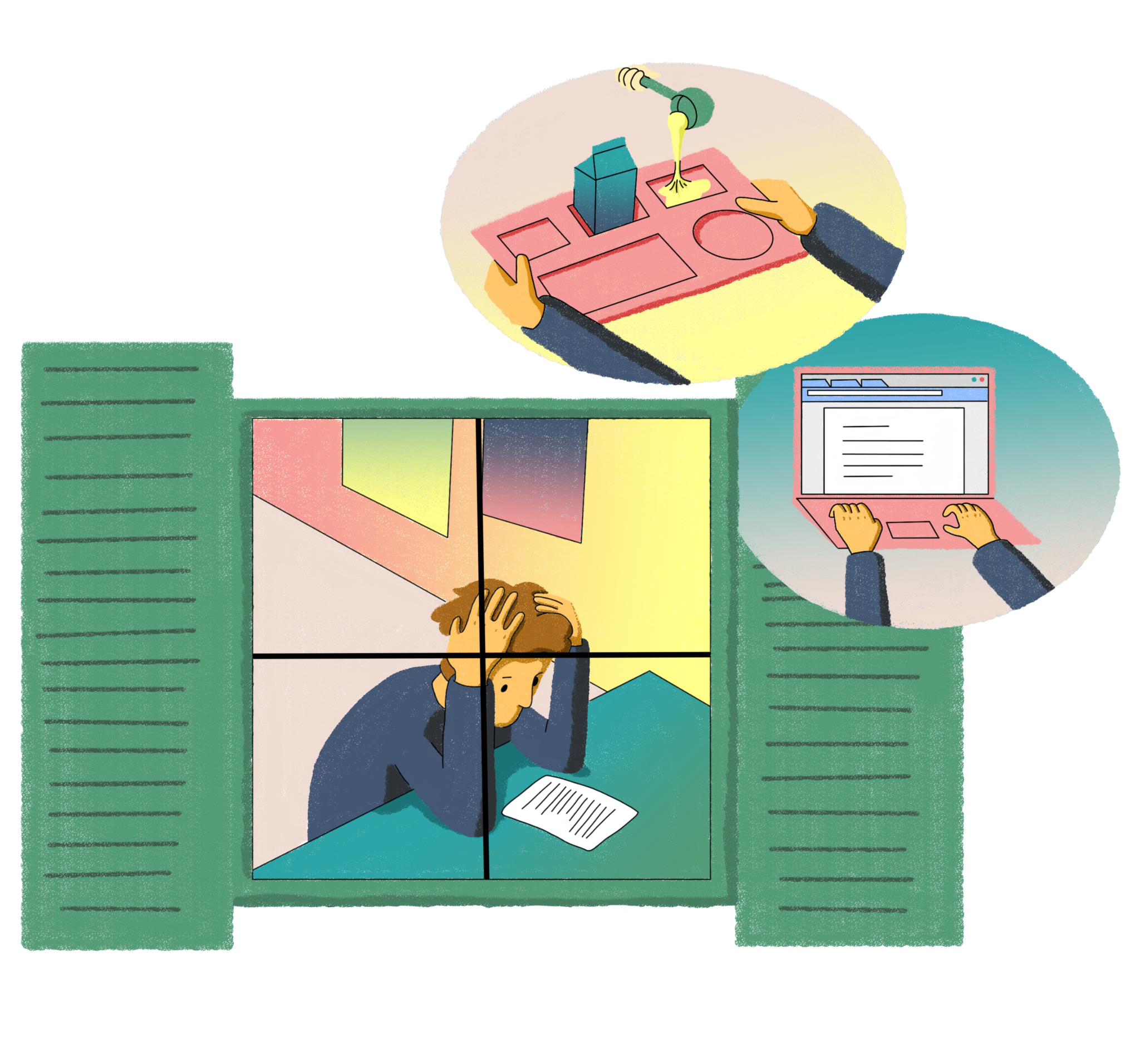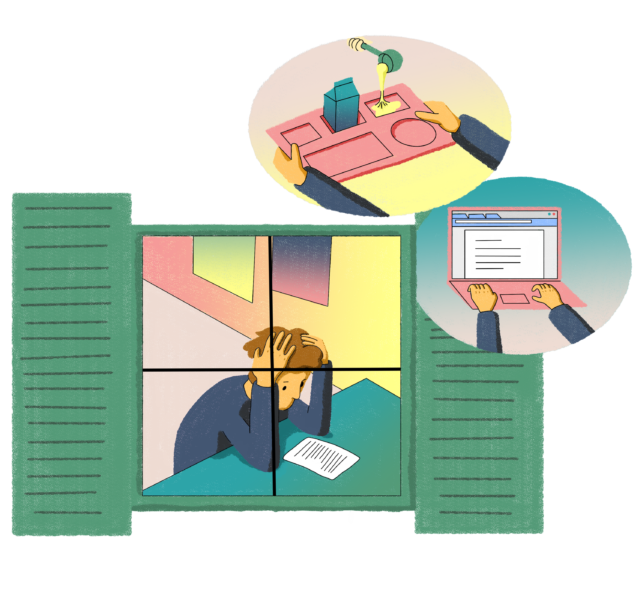

Last updated April 16 at 10:31 p.m.
Additional reporting by Kayla Shiao, Kayla Li and Elizabeth Van Blommestein
On April 16, the San Mateo Union High School’s board made the decision to switch to a “credit/no credit” grading system for this semester. The decision came after nearly five hours of online deliberation that peaked at over 850 viewers. The Board heard from a large amount of students, educators and parents, who expressed concern over how students would be graded.
In a “credit/no credit” grading system, students do not receive letter grades but simply receive a mark specifying whether they get credit towards their graduation or not.. It has no effect on a student’s cumulative grade point average. Students in AP or Honors classes still have evidence that they completed the course on the transcripts provided to colleges, even though the extra weight will not be added to their GPAs.
During the meeting, parents raised concerns that students would not receive the grades that they earned throughout the first half of the semester and that not giving a choice to receive letter grades could be a punishment to students who have continued to work hard in the class or had a good grade before remote learning began. There were other fears about students losing motivation or teachers not getting the same engagement in online classes.
Other speakers expressed that letter grades were inequitable during the current coronavirus pandemic, one parent was moved to tears as he likened the current crisis to a war, and spoke of the stress hitting his children with the struggle to keep his business afloat and his wife working in the medical field. Some contributions implored the board to have empathy for students who are in increasingly difficult situations right now, even if they are an apparent minority.
A motion was proposed after 9 p.m. to switch to a credit/no credit system, which failed at a 2-2-1 vote, with board member Greg Land abstaining. A second motion was then discussed more along the lines of “compassionate grading,” which would allow students to keep the grades they had before remote learning began or be able to keep A and B grades by continuing to put effort into class participation. After more discussion, the abstaining vote asked for a recount of the first motion and voted yes, officially passing credit/no credit.
According to a survey conducted by the Outlook, 46.3% of participants would prefer to keep a letter grade system with no penalty for turning work in late. 50.9% of participants would like at least some change, with a little over half believing that there should be a universal credit/no credit system and the others wanting students to have the option to choose. 396 students and teachers participated in this survey, and the results may not accurately reflect the wishes of the whole student body.
Polling done by the district and counseling staff showed that more than 30% of SMUHSD students had circumstances being made worse in this crisis, including socioeconomic disadvantages, disabilities and homelessness. 60% of students polled were having to help with childcare at home, and many reported having to work to make up for lost family income.
Giving students the option of letter grades or credit/no credit could put some people at a disadvantage or in an awkward position of having to validate a need for credit/no credit. Some survey participants suggested that students should have to prove that they have a special need for no longer receiving letter grades, but this could quickly become a complicated moral issue.
Some administrators, like SMUHSD Superintendent Kevin Skelly who has been supporting a switch to credit/no credit, believe that equity among students should be taken into strong consideration.
“I am struck by how much harder equity is, when you don’t have kids in session, whether it’s special ed kids, whether you have kids who have less support at home,” said Superintendent Skelly during a recent online board meeting. “You know, we often talk about equity. And I tell you, this virtual world is really hard to do that.”
One of the main deciding factors in other high schools adopting credit/no credit was an assurance from the UC school system and other colleges in California that admissions requirements would be relaxed for applicants who will graduate high school in 2021 as well as no longer holding letter grade requirements for courses completed by incoming students during this semester. The LA Times reported that UC schools are temporarily suspending their regular requirement of standardized test scores including the SAT and ACT, will not rescind any admissions of students who don’t turn in final transcripts and not have a letter grade requirement for any courses that were taken in the winter, spring or summer of this year.
Prior to a vote on the grading system, teachers in the San Mateo Union High School District were being encouraged to avoid grades with high stakes, such as big tests, or giving students zeroes for incomplete assignments. The district has also suggested that teachers keep work for students to a maximum of 3 hours per class each week, which was lowered from the previous standard of 3.5 hours. Although teachers ultimately have the power to set their own grading standards and class requirements, the district and teaching departments are suggesting that policies be relaxed. Other forms of standardized testing like AP exams from the College Board have been modified to be taken remotely.
Palo Alto Unified High School District was the first in the Bay Area to announce the switch to credit/no credit on March 25. The announcement came days after California State Superintendent Tony Thurmond acknowledged that all California schools should remain closed for the rest of the school year. Fremont’s high school district passed a similar measure on April 9.
“I think it’s mostly about equity since the shift to online learning is something that we’ve never done before,” said Ethan Hwang, a junior at Palo Alto High School. “It’s something that teachers are having to work out and come up with ways to hold lectures, tests, quizzes and homework online. And since a lot of teachers are struggling with that, they naturally have to change the grading system because … there are a lot less things in the gradebook [and] students are still trying to adjust to this new change … I think that our school just feels it’s unfair for this to happen to us, and to be worrying about being graded on the limited things that are in the grade book now.”
Hwang was vocal about wanting a switch to a pass-fail system prior to the Superintendent’s announcements, mainly citing problems with grade accuracy and high levels of stress among students.
“[The coronavirus has] affected a lot of people personally and their health, [and] I think it’s unfair to expect students to have to be graded on a letter grade scale because that necessitates a lot of focus that they might not have been able to achieve,” Hwang said. “I think that this also means that there will be less weight put on the semester grades because they likely will be less accurate given that all our classes are going online. … I think, given these things, it’s an unnecessary stress for us to have to worry about grades at the same time.”
“[The coronavirus has] affected a lot of people personally and their health, [and] I think it’s unfair to expect students to have to be graded on a letter grade scale because that necessitates a lot of focus that they might not have been able to achieve”
With far less assignments being given to students, and none of the high stakes projects that normally come with the end of the school year, some students were concerned that a letter grade may not have been what they wanted.
“To be honest, I was actually really grateful because what I was most worried about was not having enough material to get my grade back up,” said Gabriella Winer, a sophomore at Palo Alto High School. “I’m finding it harder to grasp the material without a teacher there to teach me through the instruction.”
“I’m finding it harder to grasp the material without a teacher there to teach me through the instruction”
After libraries and non-essential businesses across the Bay Area closed their doors, families have been asked to follow shelter-in-place procedures, only leaving the house to seek medical attention, buy groceries or visit a pharmacy. For many students with tumultuous home environments, this could create a difficult work situation. Similarly, teachers may be balancing work and childcare duties, with all students in the Bay Area home for the foreseeable future.
“What I have noticed is … teachers feeling somewhat overwhelmed … [from] trying to keep their curriculum going forward, but adapted to online learning” said Aragon Principal Patricia Kurtz, during an online board meeting. “I’m really focusing on continuing to support all of our kids, making sure that we’re connecting with them and getting everything to build, but also supporting my faculty.”
SMUHSD accommodated an estimated 800 students who didn’t have access to technology, according to the district’s Assistant Superintendent of Curriculum and Institution. The priority of administrators when considering grades has been flexibility and avoiding any penalization.
Hwang is optimistic that schools all over the U.S. will be following Palo Alto High School’s example in instituting more lenient grading systems for the rest of the year. The PAUSD administration has been openly encouraging other schools to consider making a similar change, arguing that teaching has been irrevocably disrupted by remote learning and letter grades will only create a larger equity gap.
“This may be the biggest equity issue facing schools during closures,” wrote Superintendent Don Austin in a memo published April 7. “Students already marginalized and battling an entrenched system of inequity cannot possibly shrink those obstacles through distance learning. In fact, it is irrational to believe anything other than a growth in the achievement gap is likely as services, connections, and resources are stripped from the students most in need. Memorializing the slide forever with a traditional letter grade is cruel, unnecessary, and indefensible.”
“Students already marginalized and battling an entrenched system of inequity cannot possibly shrink those obstacles through distance learning”
